aPrayer: memorial service for microorganisms
and artificial cells and lives
metaPhorest aPrayer Team (Hideo Iwasaki, Hanna Saito, Shiryu Kirie, Mio Iizawa, Noriko Toda)
2016- present
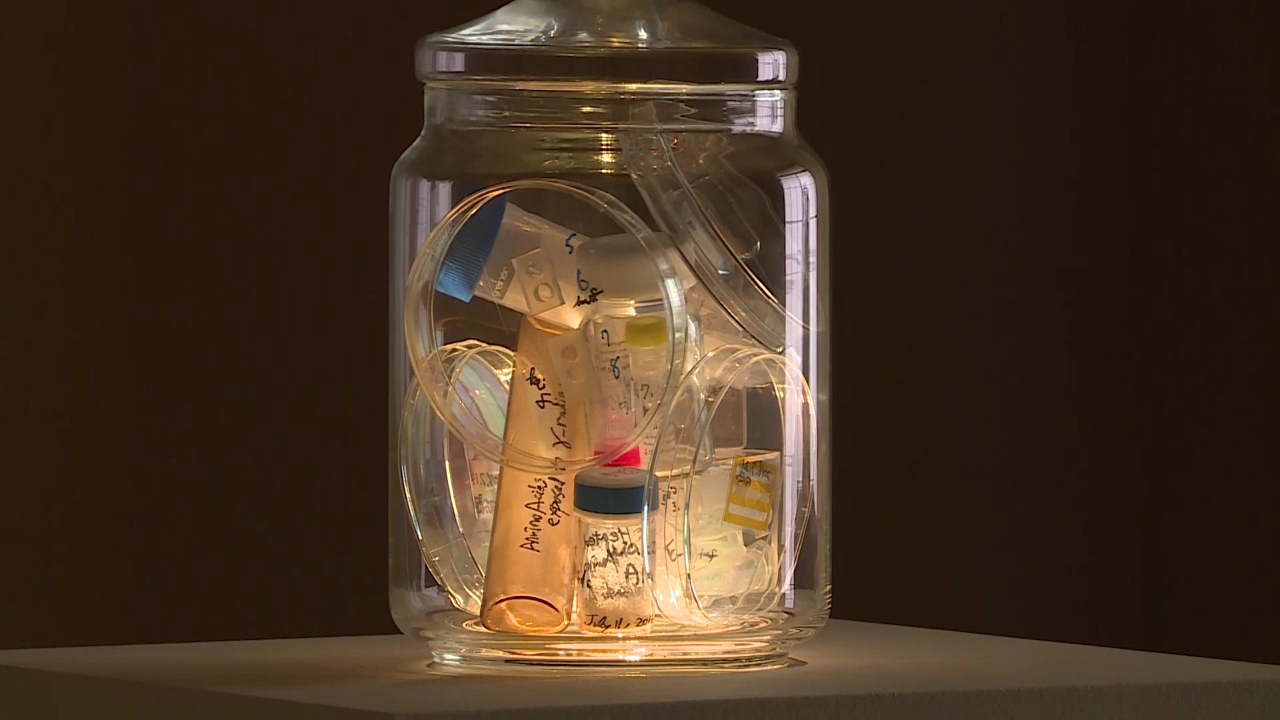
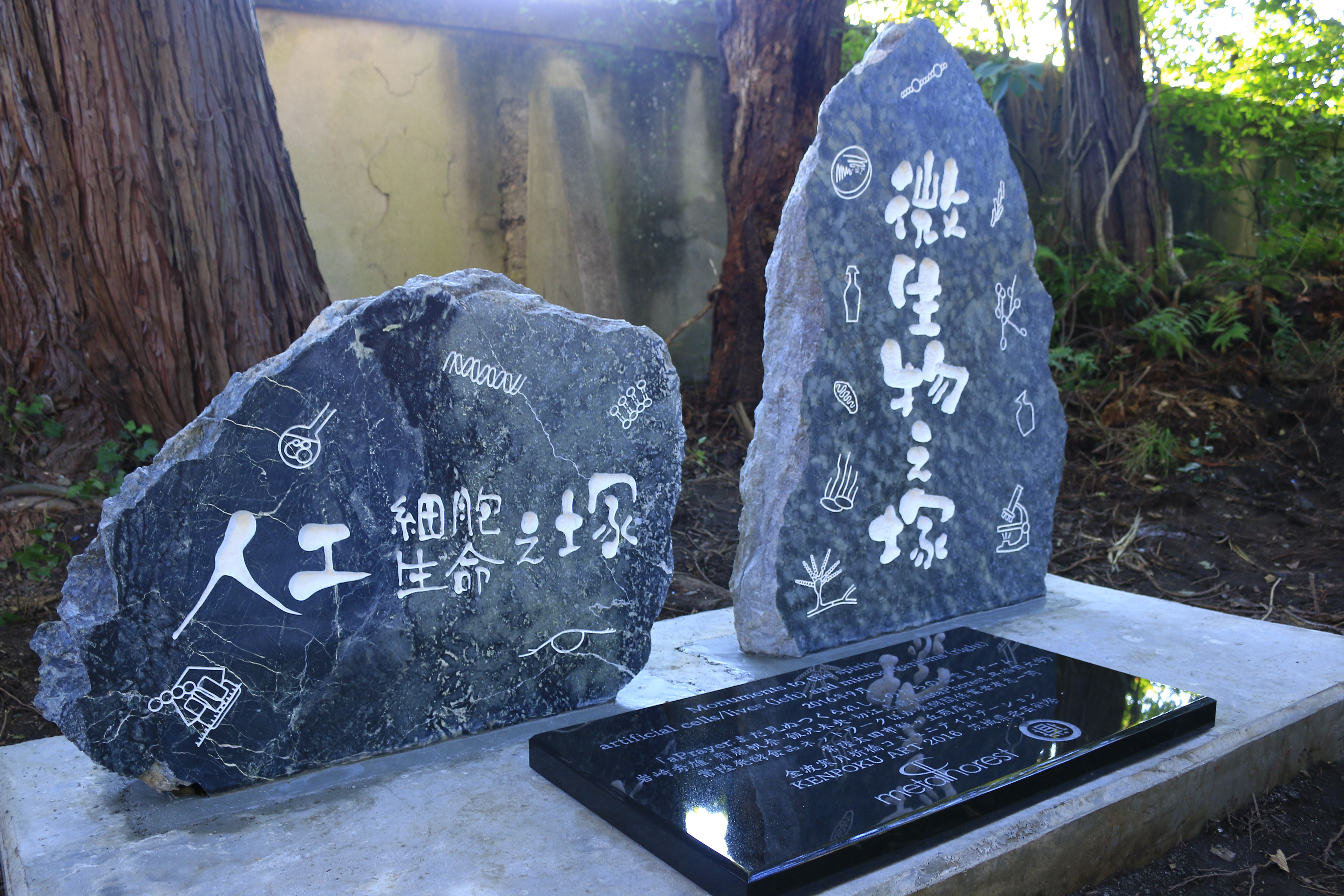
Short Summary (part of artificial cells)
Synthesis of life or cells is one of the most challenging fields in biological science. It is interesting because it raises questions what life is, what cells are. Research on artificial cells attempts to chemically create a cell as a basic unit of biological life. In creating artificial cells, life should fundamentally be redefined in order to clarify the requirements for “what to be created.” Interestingly and importantly, these processes can entail the desire for seeing life as something experienced inter-subjectively.
Actually, life can be considered with at least two aspects: One is a biological object, being described as a biological complex or organism. The other is life as an intersubjective presence, which is perceived to an observer as a more emotional object or relationship, which is exampled by the feelings at funerals and commemoration. Our aPrayer (artificial/aesthetic/alternative prayer) project aims to reconsider the relationship between the two aspects, the biological and the intersubjective, by raising such questions, as an artificial/aesthetic narrative generator: Are artificial cells and lives worth commemoration? What is death to artificial cells? Would they relativize the concepts of death and commemoration? Thinking over these matters leads us to reframe the lifeness, if any, of artificial cells and their cultural and philosophical implications.
We founded two stone monuments (one for artificial cells and lives, the other for microorganisms) to think over lifeness of artificial cells/lives and microorganisms as an artistic project in Ibaraki Prefecture, Japan, and started annual memorial services. At the initial memorial service, we prepared two glass jars, one containing experimental tools which had been actually used for representative artificial cell studies at nine laboratories, and the other containing samples and tools related to microorganisms used for fermentation foods produced locally in Ibaraki prefecture. One year later, these jars were buried beneath the monuments.
This project has been inspired by two Japanese customs: the memorial services for the souls of non-living objects, and the ones for experimental animals. Such memorial services retrospectively acknowledge that “something was alive.” Importantly “something” to be acknowledged is not limited to biological species, which are acknowledged as “life in the past” retrospectively. This aspect would be interesting to reevaluate the lifeness of artificial life/cells, because the study of artificial life is science, technology and culture to create vital feeling by combining non-living materials.
This project also involves reevaluation of an ironical but effective usage of stones for memorial media to symbolize such a fragile life for commemoration. Thus, the stone used for the monument was collected from a Cambrian geological stratum in Japan to think over that stones are also generated and change upon geological timescale.
It is still obscure if our memorial monument satisfies well-accepted criteria for standard memorial mourns. It remains at the stage of “artificial monument”. Social and cultural reception of this project would be determined by how people think over the ’lifeness’ of artificial cells/lives in the future, while making artificial cells/lives by itself could relativize the notion of death and commemoration.
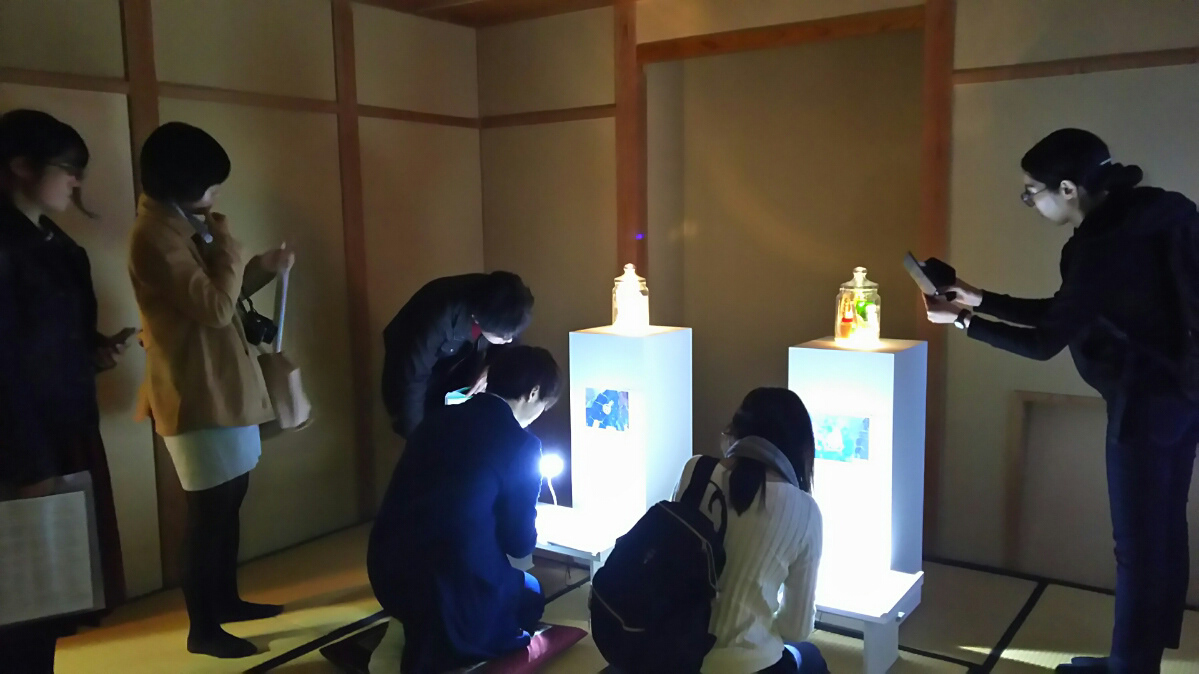
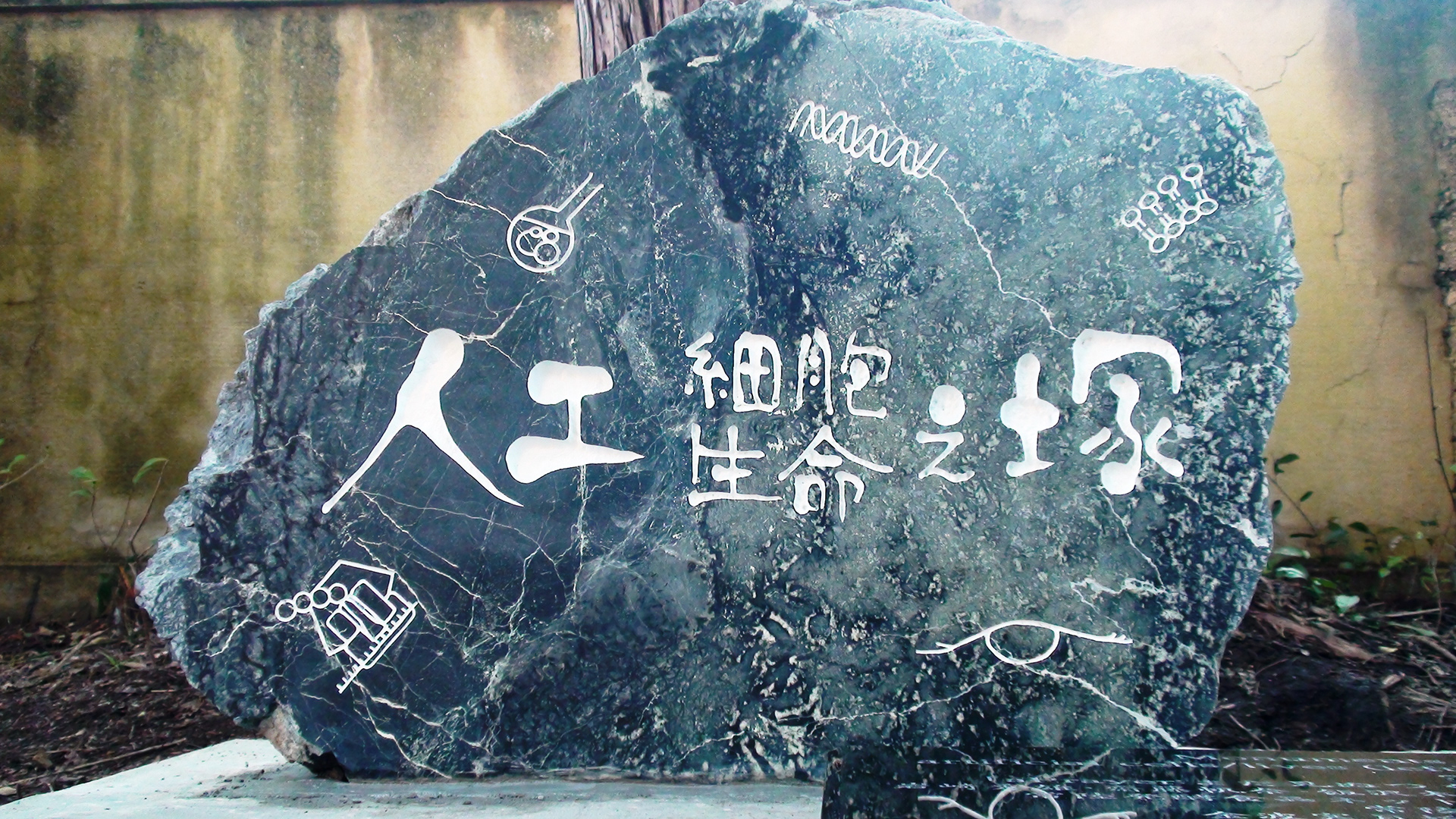
Background
Aesthetics about synthetic cell projects
One of the most ambitious questions related with synthetic biology is whether we can make a synthetic protocell in a test tube by combining biomolecules. Scientifically it is very exciting because it makes us to reconsider what life is, what cells are, what is boundary between life and non-living materials.
There are mainly two ways to synthesize artificial cells. One is a top-down or hacking approach. It is represented by the creation of artificial bacteria based on mail-ordered, or chemically synthesized genomic DNA performed by the C Venter Institute in US (2010-). What we think interesting is that, if you ask many biologists if this bacterium is alive, most of them would answer “yes, it is” But if you ask if this is ‘synthetic life’, it will be much more debatable, and many scientists would disagree with the idea. Meanwhile, there is another approach to creating protocells, which is based on the “scratch and build. What it does is to combine biochemical molecules for continuous regeneration of genetic, membrane, and protein compounds, etc. This time, many researchers would agree that it is “synthetic”. However, about its being “alive”, their answer would not be unanimous. It is probably because the question of “whether newly designed artificial protocell or a biochemical complex is alive” sounds somewhat emotional, with the implication of “what life is for you.”
Actually, life can be considered with at least two aspects: One is a biological object, being described as a biological complex or organism. The other is life as an intersubjective presence, which is perceived to an observer as a more emotional object or relationship as “life with us”, which is exemplified by the state of funerals and commemorations, for example. We are interested in the ambiguous border and complicated relationship between the two aspects, that is biological and intersubjective and/or even ontological. They are tightly interlocked and form complicated boundary. Obviously, aesthetics or art is a good platform to explore such topics. We guess one reason is due to intrinsic similarity between life and arts.
Two Japanese customs: Memorial services for experimental organisms and even non biological tools.
More than 90% of universities and biomedical research institutions in Japan hold memorial services for experimental animals or experimental organisms every year. Usually, biology is taken to attempt objective description of life, and tries to exclude ambiguous expressions as much as possible. But memorial services held in scientific institutions show that such intersubjective and emotional experience is formally organized repetitively in the hall of science. Officially it is supposed to be for educational and ethical purposes for the use of sacrificed animals. But historically it is also as an extension of Japanese tradition of memorial services for non-human species. For example, we can easily see many old stone monuments for horses, fish, and many other organisms all over Japan. There is even a monument for snails which were vectors for serious parasitic infection. By 1983 the snails were eradicated in the southern part of Japan. In the monument it is written that “We hereby commemorate the Miyairi snails that have been made artificially eradicated in the area of the Chikugo river, for the sake of protection of our human society.” Here we can see the deep compassion of the eradicators even for the eradicated.
But it is more important for us that biologically non-living materials or tools are also to be commemorated. Monuments for pens, brushes, needles and dolls are often founded, and memorial services are regularly held. There should be all sorts of historical and ethical implications of the memorial services, such as a connection to local religions etc. However, what we want to emphasize is that the memorial services retrospectively acknowledge that “something was alive.” Here, it is important that “something” to be acknowledged was not limited to biological species, which are acknowledged as “life in the past” retrospectively.
Now go back to our project, please note that the study of artificial cells and lives is science, technology and culture to create vital feeling or living existence by combining non-living materials. So, there can be coincidence here.
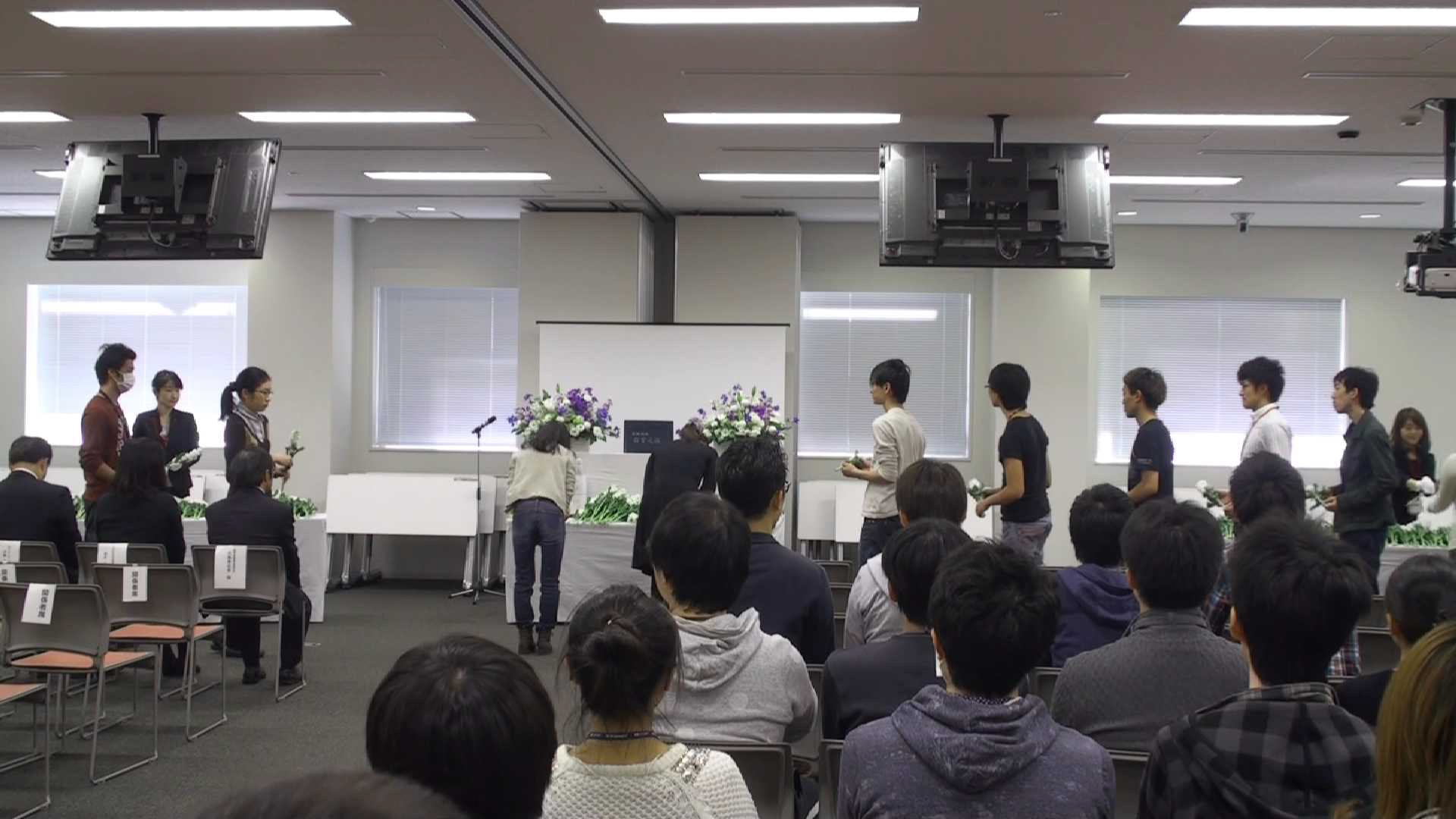
The annual memorial service to pray for deseased experimental organisms (Waseda University, TWIns, November 2015)
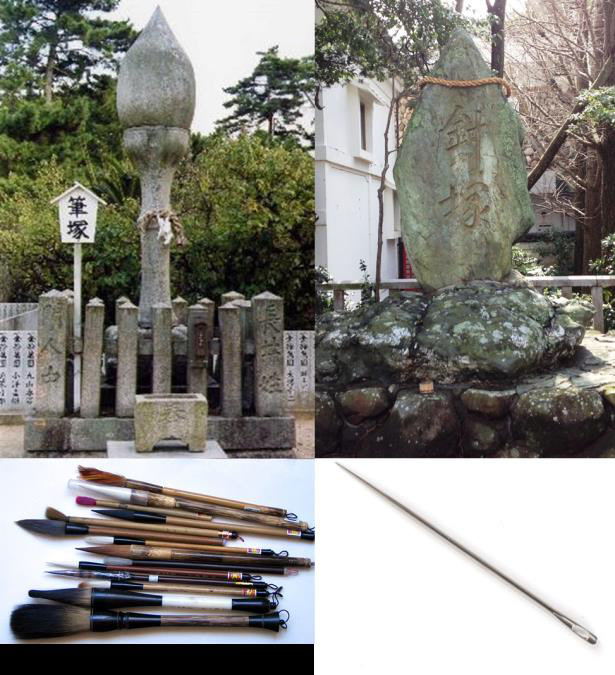
Memorial monuments for used brushes/pens (left) and needles (right) in Japan.
Our project:
Commemoration of artificial cells as a thinking/artistic experiment
Our project is to bridge the gap between the two aspects, the biological and the intersubjective, of artificial cells by setting a memorial service and a monument deliberately. By doing so, it raises questions such as “what are death and lifeness of such synthesized cells” and “is artificial life worth commemorated?” We founded a stone monument to the “souls” of artificial cells/lives in Japan as an artistic project in Ibaraki Prefecture in 2016, and started annual memorial services. We also made a monument to innumerable microorganisms, as the area (Ibaraki Pref.) is rich in fermentation food culture. At the initial memorial service, we prepared a glass jar containing experimental tools which had been actually used for representative artificial cell/life studies at nine laboratories. The list of the tools is as follows:
1. In vitro translation system (the PURE system) provided by Prof. Takuya Ueda (University of Tokyo): PURE system is a mixture of recombinant ribosome and translation proteins from E. coli bacteria, transfer RNAs, and adenosine/guanosine trinucleotide phosphates. It is a reconstituted system used to synthesize proteins in a test tube based on template RNAs of your interest. Ribosome is a genetic decoder of the genetic code, by which cells interpret and transform genetic (nucleotide) information to functional micromachinery which is composed by amino acid polymers (proteins).
2. Cell-size vesicles made with synthetic lipid bilayer (liposomes) provided by Dr. Yutetsu Kuruma (Tokyo Institute of Technology): Some researchers consider membranes to discriminate inside (self) and outside (environment) to be essential for genesis of life. Liposome is a synthetic cell membrane vesicle composed of synthesized lipid bilayer. We collected samples which were used for such an experiment that different biomolecules were encapsulated in liposomes to observed if it changes mobility and biochemical property of the vesicle.
3. Artificial cells to mimic some microbial activities provided by Dr. Kei Fujiwara (Keio University): In real cells biomolecules are extremely concentrated. Thus, usually we cannot reconstitute such chemical solution in a test tube. This researcher developed a clever method to condense cellular extract in liposome using osmotic pressure. He also provided us liposomes with metabolic proteins to facilitate ethanol production in such artificial cells. The ethanol produced was also used for the opening ritual of our stone monument.
4. Evolvable artificial cells, provided by Prof. Norikazu Ichihashi (Osaka University): Cell-sized innumerable water droplets are surrounded by oil in a test tube. The droplets contain reconstituted genetic system (RNA, ribosome, and amino acids). Chains of biochemical reactions, spontaneous errors in decoding process, forced division of water droplets, and isolation of mutated contents facilitate in vitro artificial evolution to enhance fitness to survive in experimental conditions. However, in the current state, such system tends to be changed uniformly to loose diversity, contrast to diverse evolution in real life.
5. Micro device compiling innumerable cell-sized bacterial extract, provided by Dr. Kazuhito Tabata (University of Tokyo): The device holds millions of bacterial sized pores, on which bacterial extracts were loaded, and then sealed with thin lipid bilayer. Each pore is a hybrid cell, remaining at least some basic genetic activities, such as transcription and translation. This is a Frankenstein-like experiment to ask if living bacteria can be regenerated after disruption of the cell.
6. Microrobotics formed in liposomes encapsulating proteins for muscle behavior, provided by Prof. Shin-Ichiro M. Nomura (Tohoku University): This synthetic membrane vesicle (liposome) contains proteins involved in cell motility and DNA-origami. The latter is three-dimensional microstructure made with DNA chains, which is used to control contact of the proteins to the membrane. By doing so, the the shape of the liposome is changed, and occasionally motility is given to it.
7. Mobile oil droplets surrounded by water phase, provided by Prof. Taro Toyota (University of Tokyo). This oil droplets are made of specific synthesized organic compounds, and some detergent effect on the surface of the droplet is likely important to generate its active mobility property. It is a typical nonlinear physical dynamics under non-equilibrium conditions.
8. Heated or Cobalt 60-irradiated amino acids, provided by Prof. Masashi Aono (Tokyo Institute of Technology): Proteins in organisms on the Earth are composed of 20 amino acids. However, origin of polymerization of amino acids remains mystery, since production of amino acids requires hydrophilic environment, while polymerization (protein synthesis) requires hydrophobic conditions. The researcher thinks it could occur under local and periodic alternations of hydrophobic and hydrophilic environment, such as geyser and extremely heated or radiation conditions in the ancient Earth. He actually showed that polymerization of amino acids occurred under artificial conditions to mimic them.
9. Synthetic cells which are able to divide autonomously, provided by Prof. Tadashi Sugawara (Kanagawa University): Autonomous cellular division is one of hardcore issue to synthesize cells. This artificial cell is composed of liposome with special membrane composition and contains DNA and an enzyme (DNA polymerase) to replicate it. When inside DNA content is elevated by the standard technique called PCR, physical contact of DNA to the membrane facilitate catalytic activity of some membrane compounds, thereby facilitating further polymerization of the limpid. It gives rise to growth of membranes. When the membrane is expanded over a threshold, the surface tension cannot be maintained, and thus the membrane vesicle becomes divided into two vesicles. This is one of the first demonstrations of artificial cells to be divided autonomously. Also, we think it very interesting that DNA functions here not as a genetic code but a catalyst to mediate cell shape and division here.
All these examples show broad-range activities in the field of cell synthesis research. It should be noted that a member of the project (Hideo Iwasaki) has also somewhat contributed to this field. Hideo reported the first reconstitution of a biological clock in a test tube (periodic enzymatic reactions with a period of 24 h) by simply incubating three clock proteins from cyanobacteria (2005). One year later (2017), the jar was buried beneath the monument by local citizens and synthetic biologists
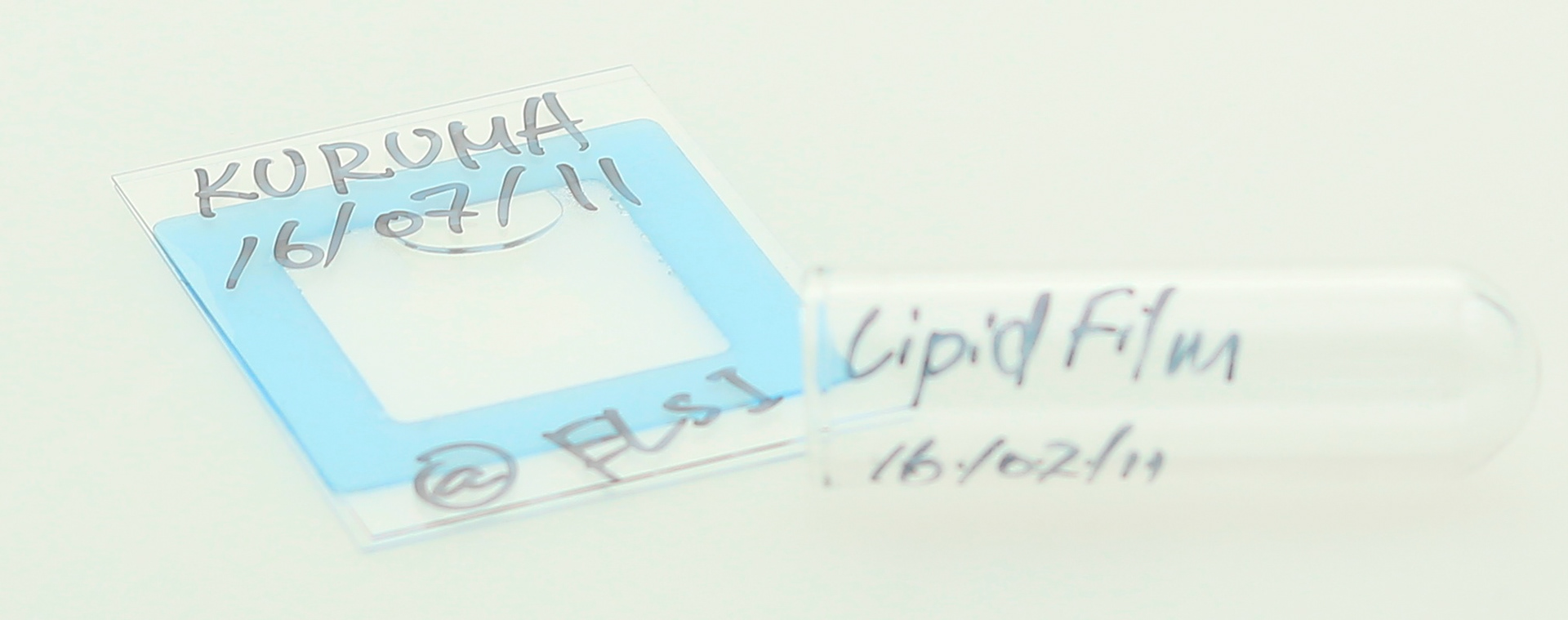
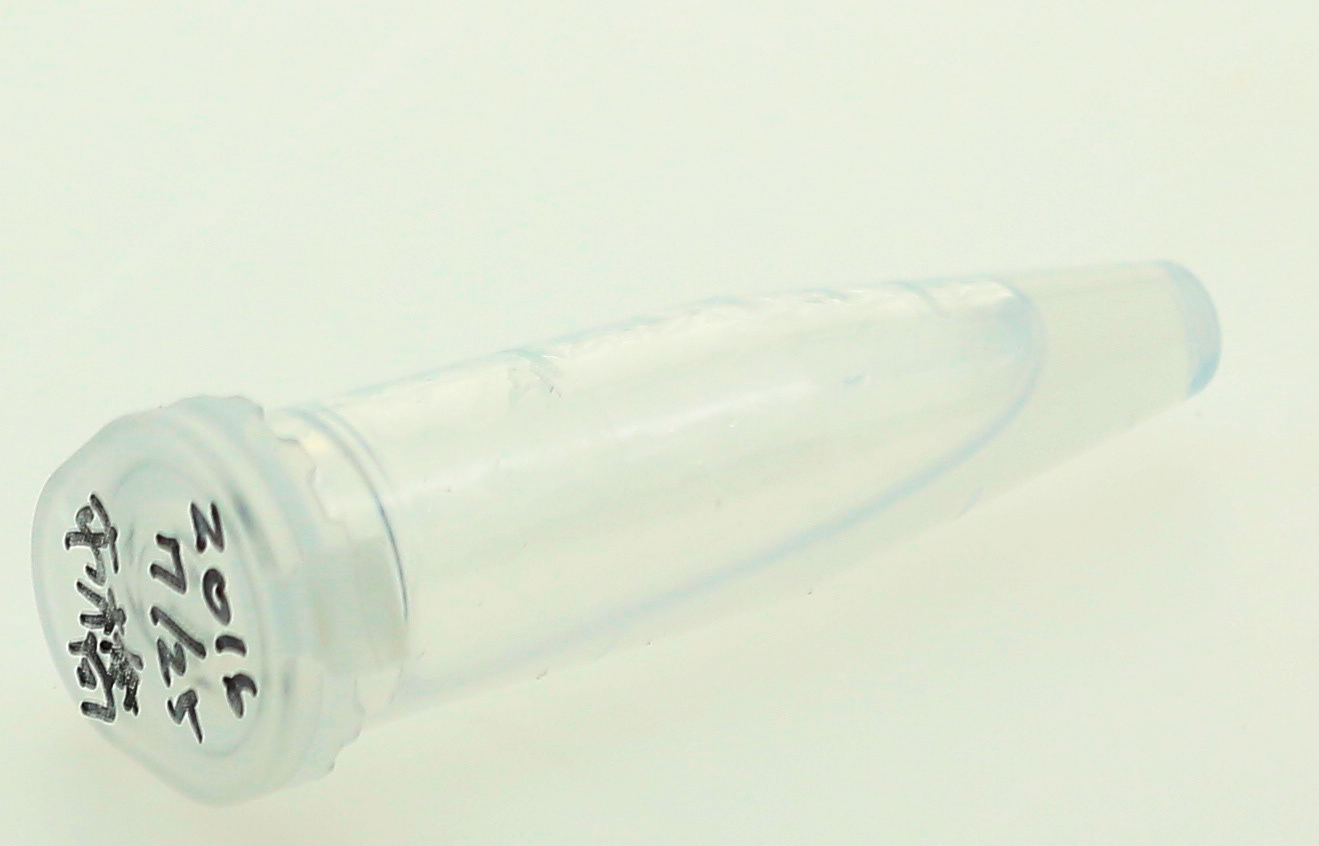
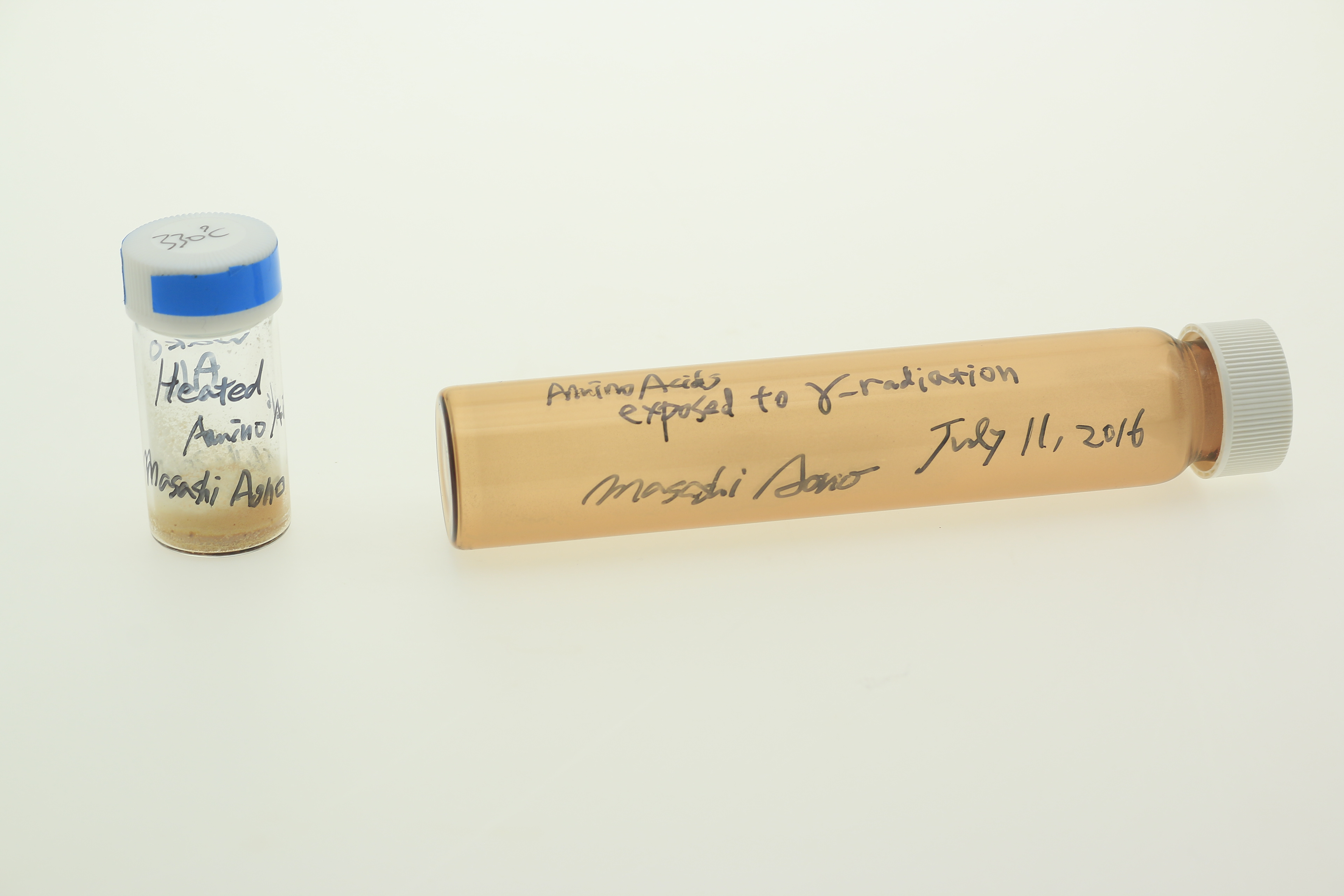
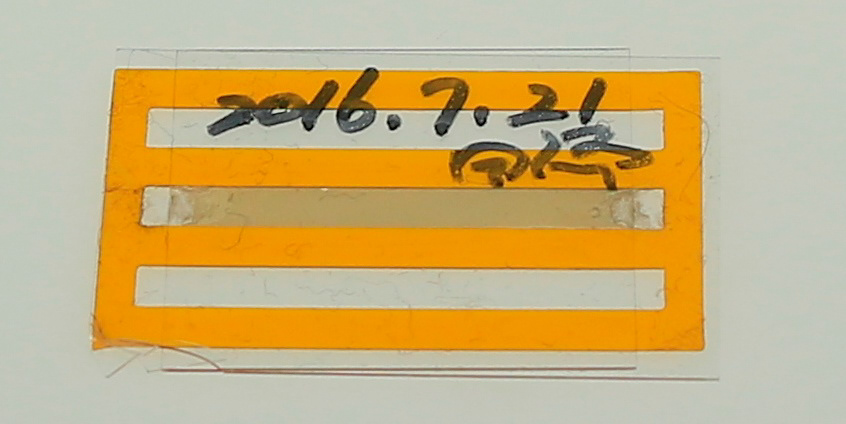
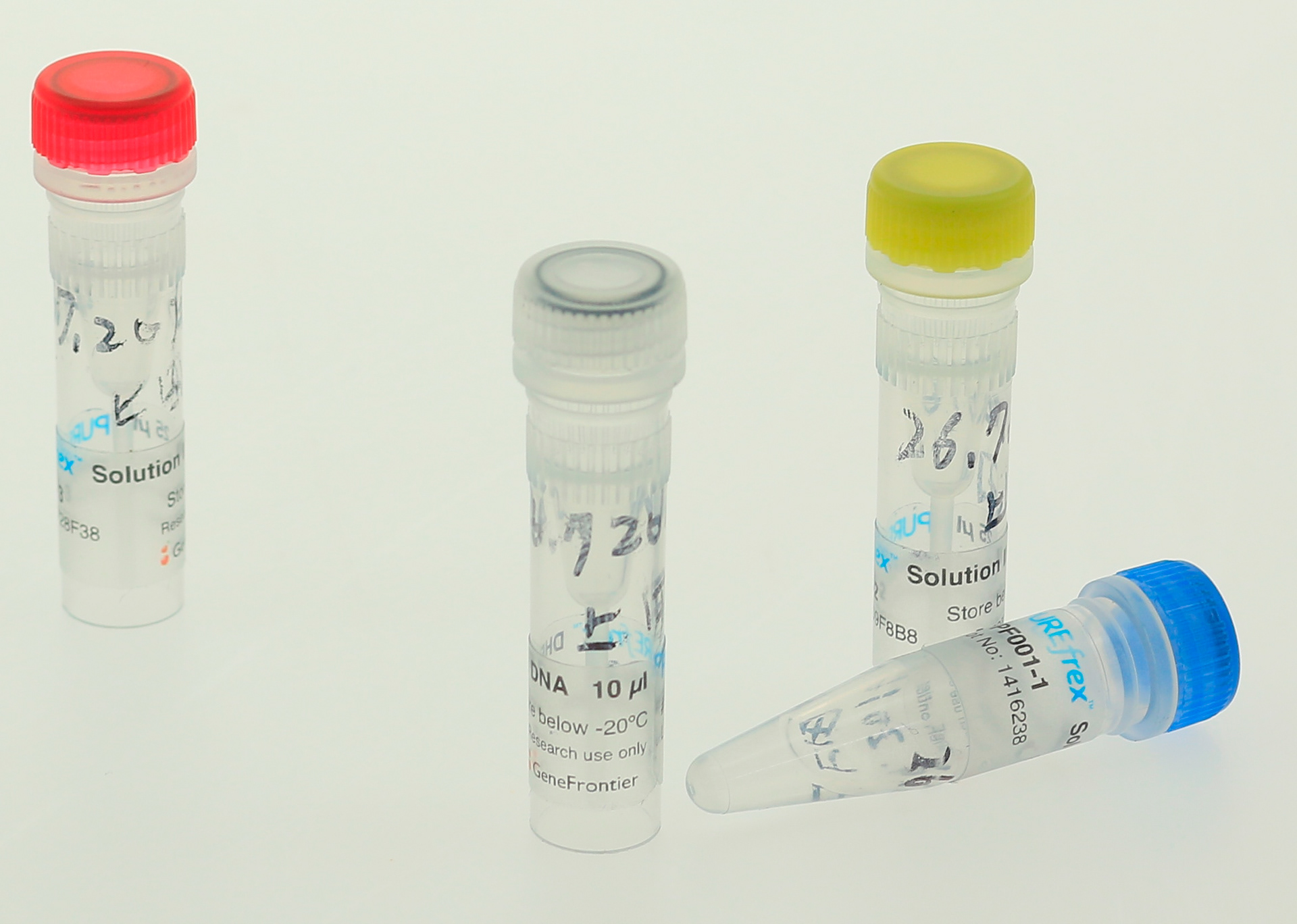

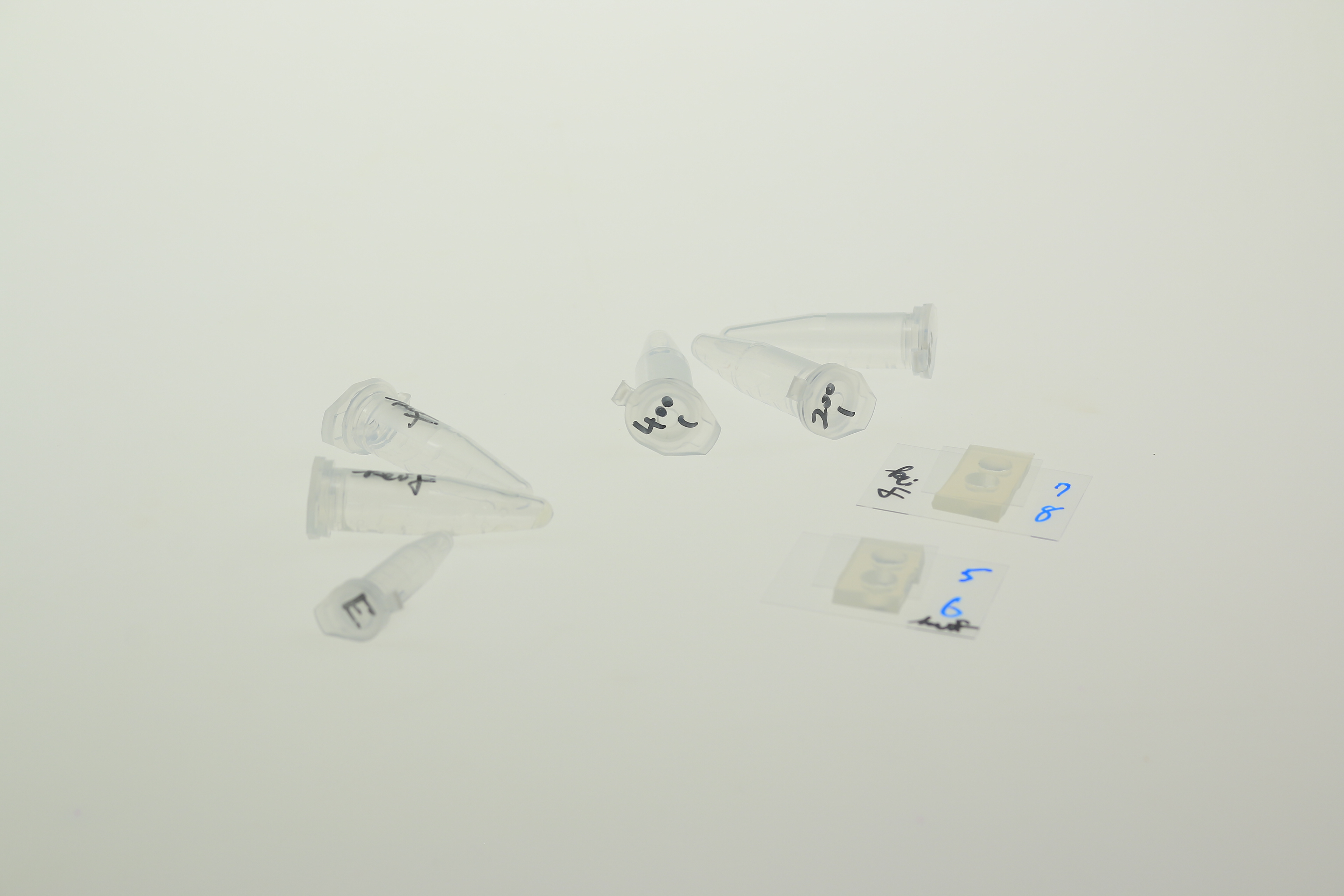
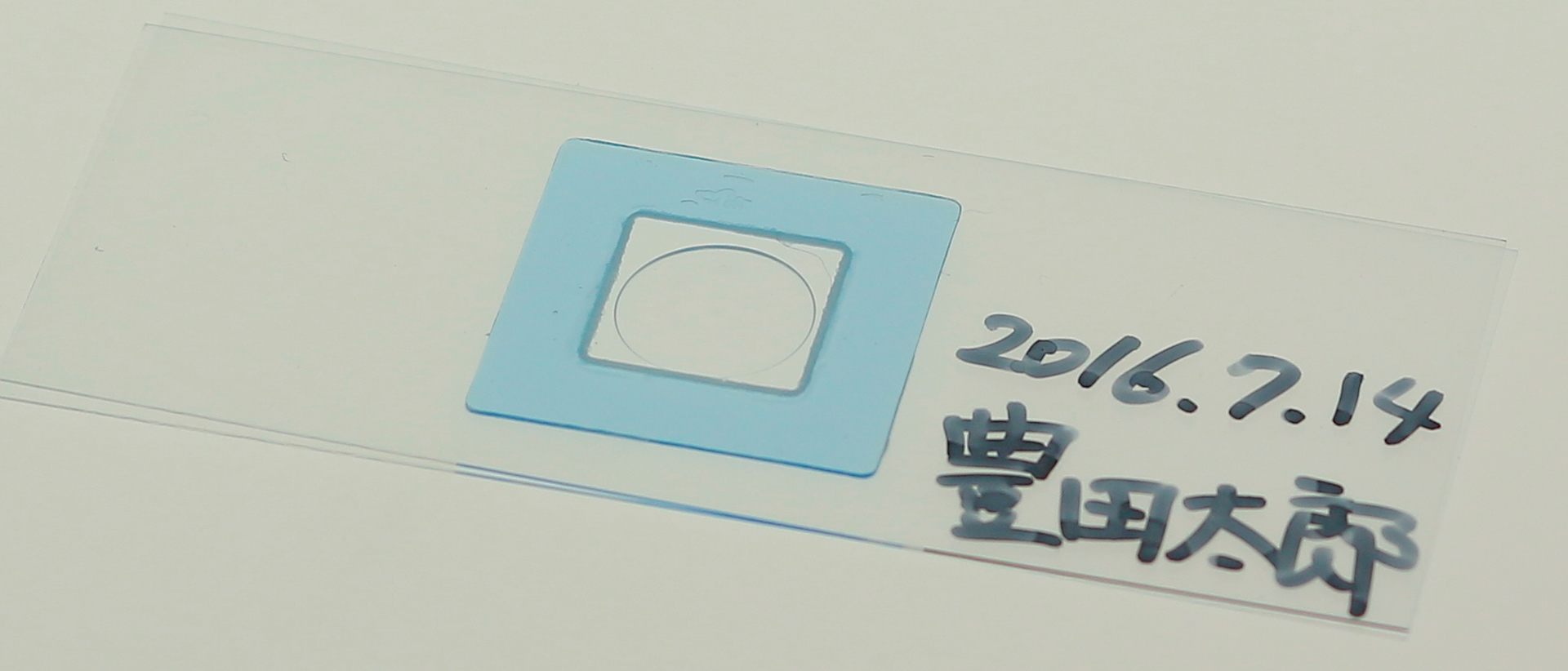
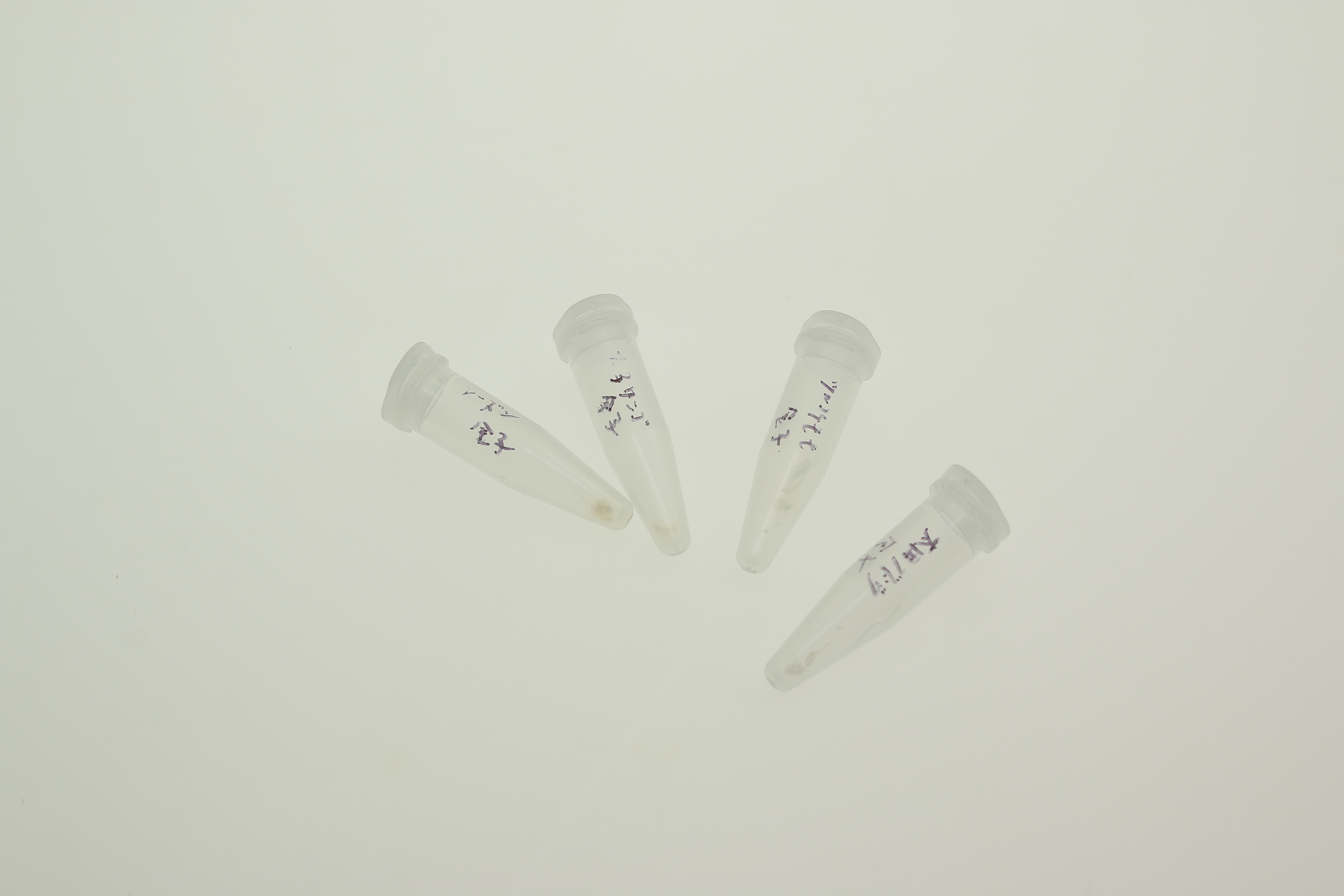
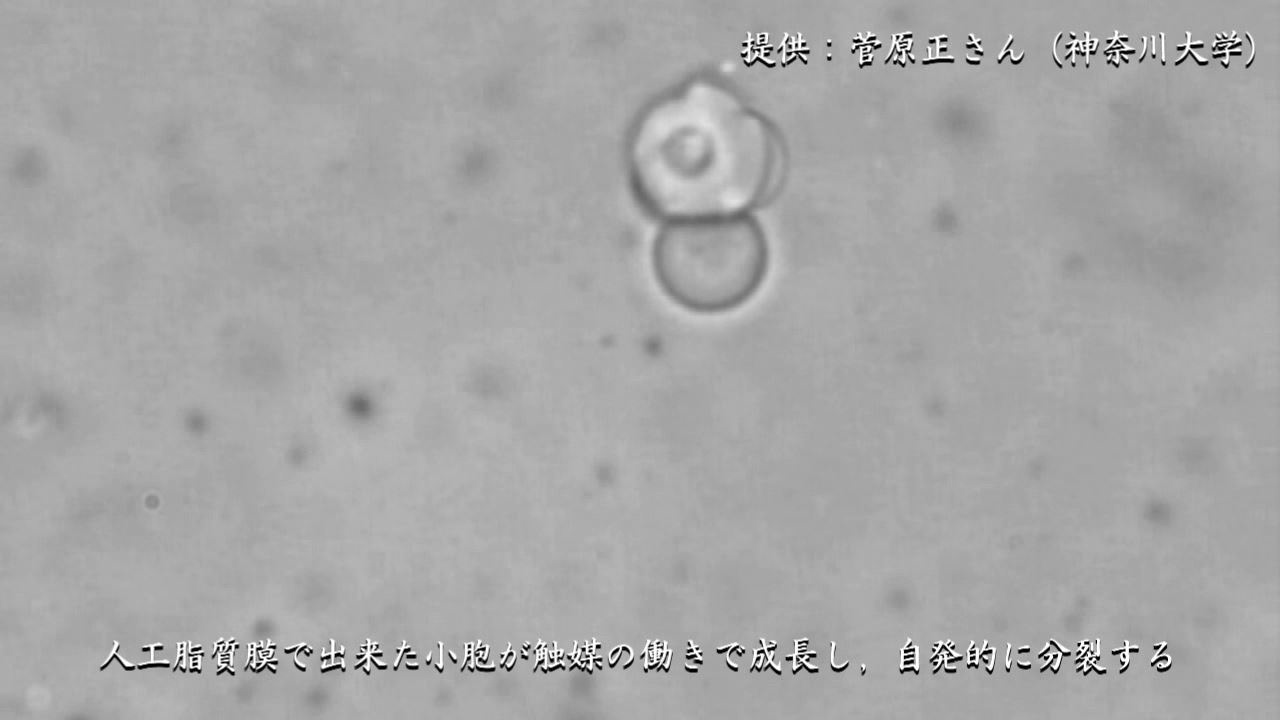

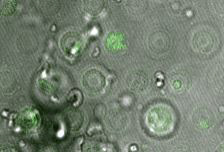
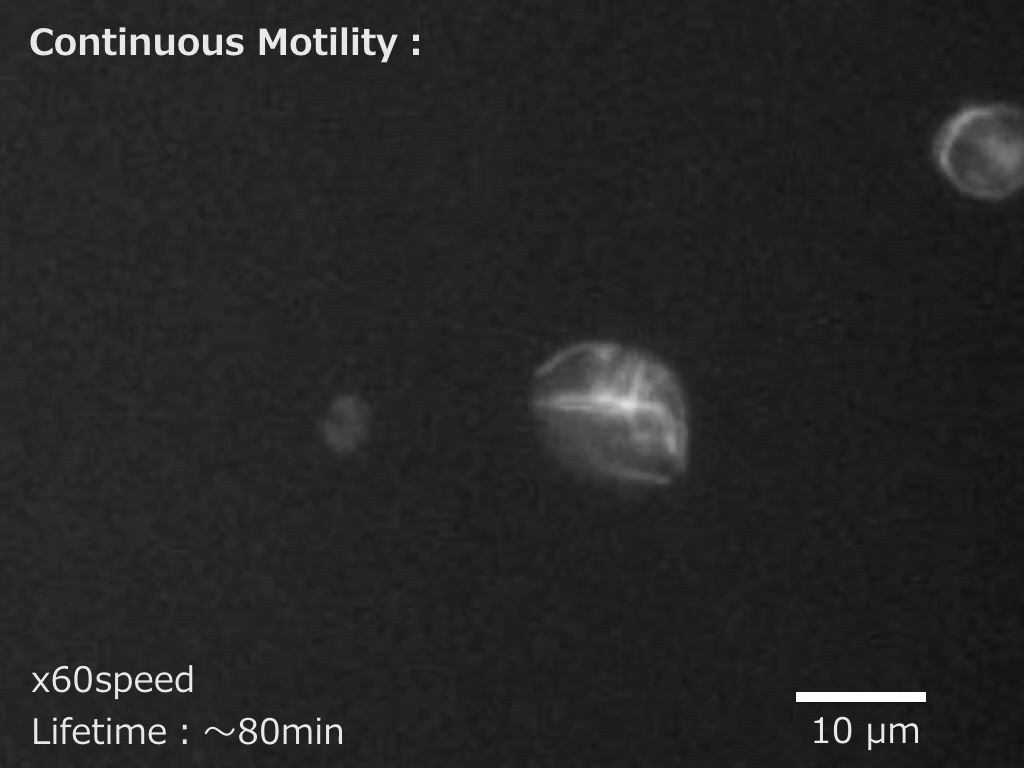


We have interviewed 14 researchers (nine researchers listed above, plus Profs Takashi Ikegami and Shoji Takeuchi at University of Tokyo, Prof. Daisuke Kiga at Waseda University, Prof. Makoto Hayashi at Kogakuin Univerisity, and Prof. Yoshio Tagiri at Ibaraki University). We asked questions, such as,
- In which point do you feel lifeness in your daily life?
- Do you experience such feelings to your own artificial cells/lives?
- What is necessary requirement in order to declare that you really make life?
- Have you joined memorial service of experimental organisms? Do you think it makes sense?
- Which organisms are worth commemoration in your sense?
- Is your artificial cells/lives worth commemoration?
- When and how do your artificial cells/lives die?
- Do you feel sorry when your artificial cells/lives die?
- How did you think or feel when you hear our project (memorial service for artificial cells)?
- Do you have any idea of farewell words to your ‘dead’ artificial cells/lives?
- How does your artificial cell/life project influence to our future? etc.
These issues are not directly written in their scientific research articles. However, we believe the answers reflect their own ways of acknowledging lifeness and humanities aspects of the study of artificial cells and lives. A lot of information obtained are not easily summarized here and will be published elsewhere. However, we note some of interesting feedback from researchers.
“If talking about sympathy, personally I can be sympathetic up to E.coli bacteria. As they are creatures just like us. However, I have a feeling that one would hold a memorial service up to mammals. Perhaps genetic homology would influence on that. If something is genetically close to ourselves as mammals, perhaps we could have a ceremony for them. (Would it be possible to make artificial cells that make us feel sad when they die?) Do you mean I would become sad? Yes, of course, even now, I devote my biggest affection to artificial cells! I can say I care for them like parents do for their kids. (As a parent, we would hold a memorial service for kids, wouldn’t we?) Yes, we would have to!”
“When I heard about the memorial service for artificial cells, I thought, “Oh, that’s the way!” By creating a format to claim that artificial cells were alive, and making it so we need to hold a memorial service because they were alive,...”
“Our purpose is to make something equivalent with or beyond a microorganism. Until then, actually, I feel a kind of sadness in making artificial cells, a similar feeling to when the baby is born unsuccessfully.”
“When we consider the composition of lipid, we’d think, ‘Upon increasing chloroform from 20 to 21%, may the lipid not be spoiled!’ and that is a kind of a prayer”
“Oh, this is the artificial monument! We too make artificial cells that still don’t have soul, but we want them to be like a real cell one day, to work better than a real cell does, and later put “soul” in them. So the monument is interesting in enabling a meta look at our work.”
To the question, “When and how do your artificial cells/lives die?”, some researchers answered that they feel so when they see the reactions stop. In contrast, a researcher told us as follows.
“That’s something I’m not quite certain. They just stop responding when they are frozen, but if you take them out of a freezer and treat them properly, they’ll start responding again. In that sense they might not die. As they are made artificially, they can be brought back to the original condition in one way and another. That could mean their death never occurs, though nonliving things couldn’t die, either.” -Then what would be necessary in order to make an artificial cell that would die? “That would not be artificial, I wonder?” -Do you mean we are capable of making a living thing but not death? “That’s right. After all, artificial cells won’t die, as long as they are alive. Death means no reproducibility, but they are reproducible…”
…But, is anything lacking death truly alive?
There are many other opinions. We also collected from local citizens and fermentation food makers. In any case, our setting the memorial monuments and services likely functioned as a “narrative generator” about this issue even among experts.
Upon the opening, a Shinto priest served a ceremony for the stone monument. However, it is obscure if it satisfies well-accepted criteria for standard memorial mourns. It still remains at the stage of “artificial monument” as one researcher suggested above. Social and cultural reception of our monument would be determined by how people think over the “lifeness” of artificial cells/lives in the future, while making artificial cells by itself could relativize the notion of death and commemoration.




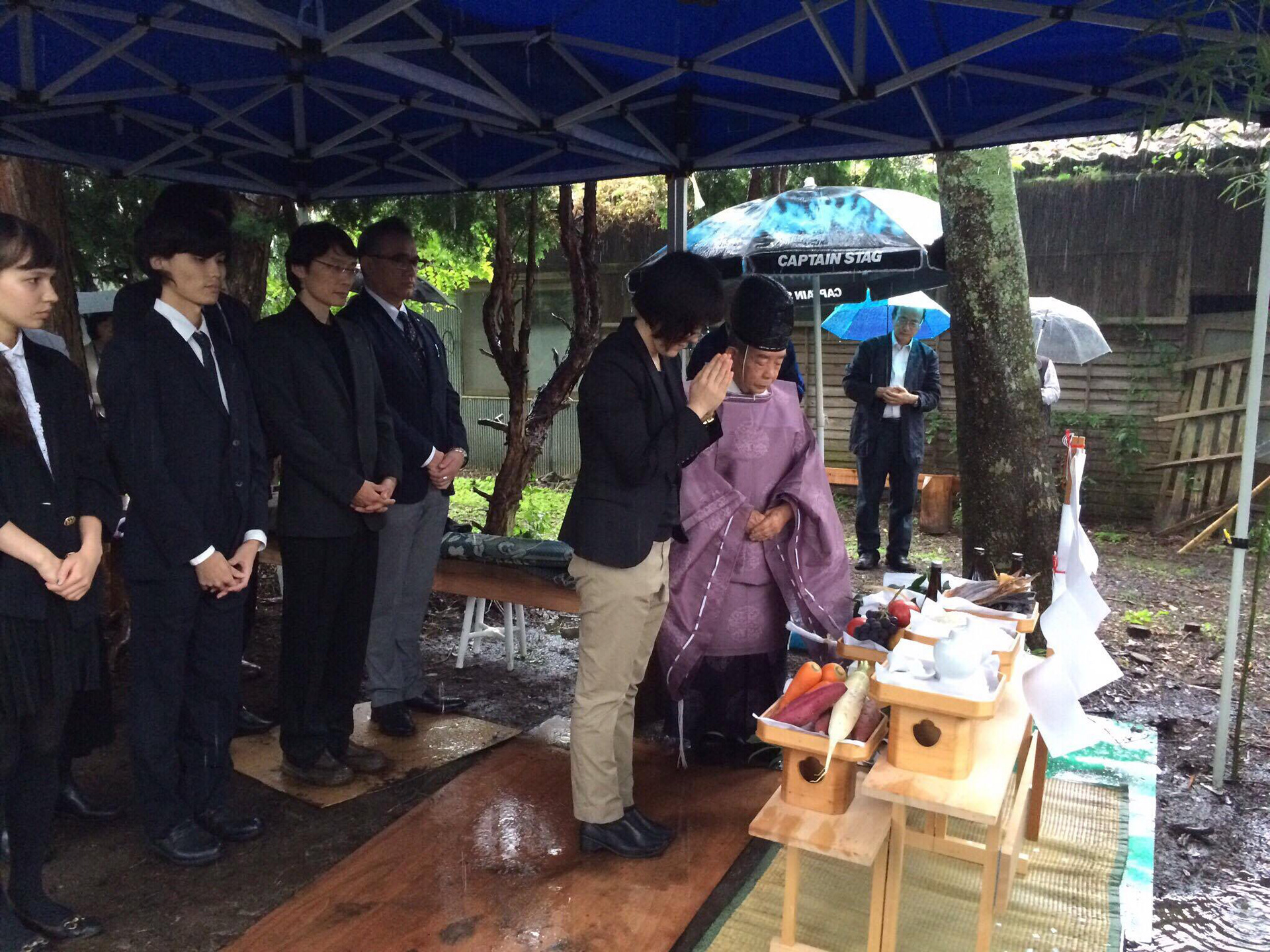
Geological and philosophical relevance of stone monument to our project
One of aims of this project is to provide an alternative way to think over philosophical and cultural implications of synthetic cells/lives through the view of commemorations. We thought it important to make actual memorial monument with stone and set it permanently at a public space. Biomedia art projects often exhibit artworks with living materials, and sometimes their temporarily and fragility confer aesthetic strength to the artworks. In contrast, to provide artwork with stone in a classic style would give some impression of anachronism. However, it should be noted that timescale of commemoration and death is quite different from that of individual life. The former is much longer and not closed during the time of individual life. This is the reason to adopt such a paradoxical and ironical usage of robust, non-biological stone to symbolize and memorize fragile lifeness. 500 years later, some people may rediscover the monument and say “oops, there likely to be non-artificial lives in the past! Now we are surrounded by all artificial lives, including ourselves!”. Alternatively, they may say “it was impossible science fiction which never occurred.”
There is another important reason to use stone in our project. The area to set up the monument is known to have the Japanese oldest geological stratum formed in the Cambrian period (500 million years ago). This fact relativizes the narrative of ‘eternal stone’ into much more dynamic context: rocks and stones are also formed dynamically and remaining transiently, sharing some properties of life, at geological timescale. Indeed, some epistemologists in 18c discussed that “stone is also living, but its metabolism is extremely low compared with normal life forms”. The philosopher’s Stone can also be considered to be a matter which holds some germ of lifeness. It should be noted that the study of artificial life is science, technology and culture to create vital feeling by combining non-living materials, as is mentioned above. To think over our perception of lifeness, our project suggests comparison of the notion of life with that of stone/matter would be important in these ways.
We also learned history and geology of the stratum and stones from local geological experts. Interestingly, local specific stone called Machiya stone (a kind of olivine stones) collected from the Cambrian stratum is suitable for curving. It was officially authorized and used by the Mito (Ibaraki) Domain during the Edo period in 17c. However, due to over-mining, it was not more mined and sold after 1930s. Therefore, with the kind aid of local community, we visited descendants of local masons, and found a family who still kept stone blocks at its garden. The community was also helpful to find and provide a place to set the monument (an old sake brewery in Hitachi-Ohta City, which is now used as a public space “Orihashi Community Station”: 799 Orihashi, Hitachi-Ohta, Ibaraki, Japan).
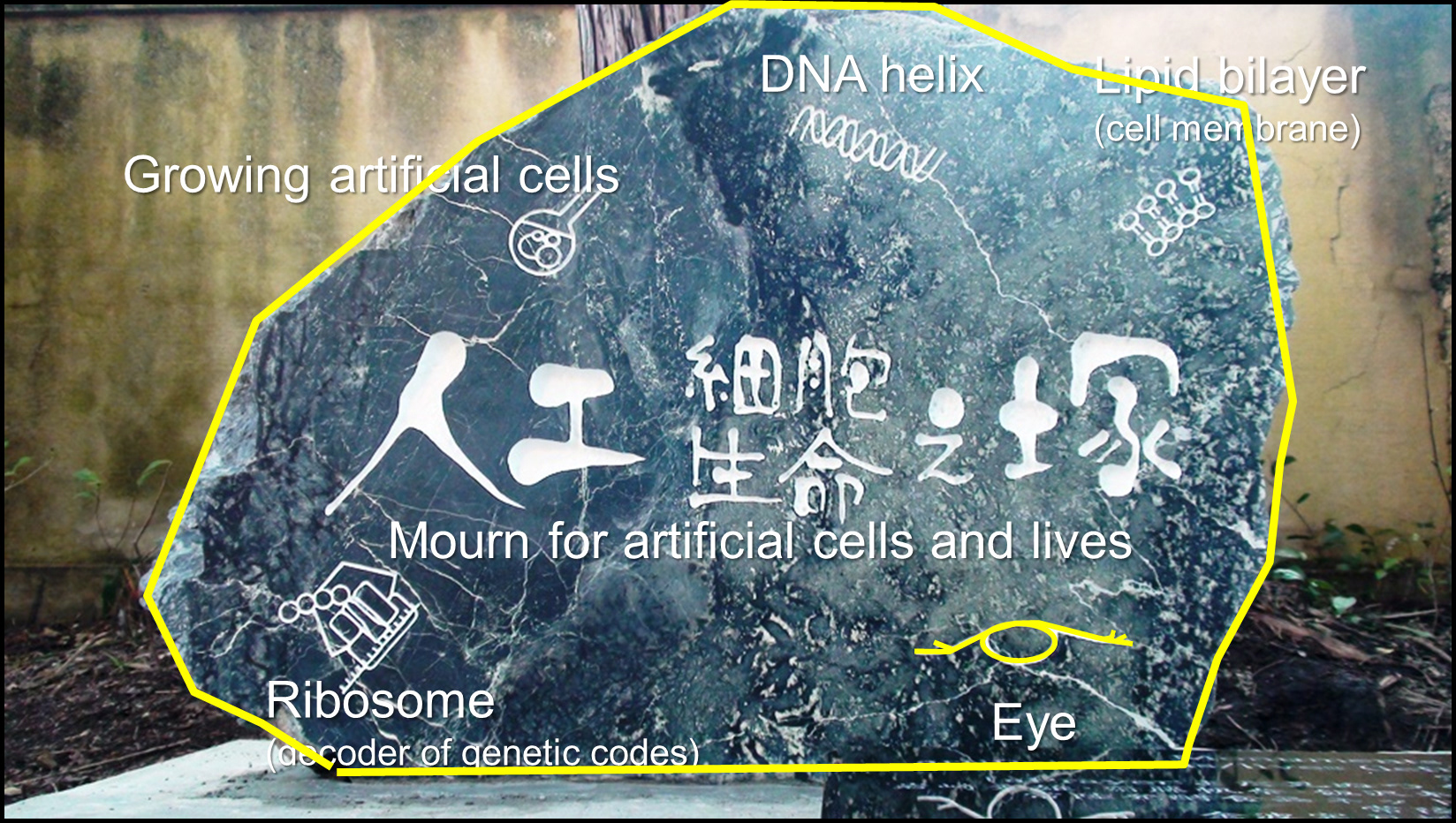

On the surface, we inscribed four representative motifs related with synthetic cells, that is, ribosome (a genetic decoder to interpret DNA and synthesize proteins), cells which are propagating in a flask, DNA double helix, and lipid bilayer (cell membrane components). We also added the image of an eye, and make the stone appear as the head of human beings.
On the backside of the monument, we inscribed as follows:
“We hereby acknowledge this stone monument to commemorate artificial cells and lives, that are still unseen, yet will have been synthesized before too long. We hope the monument will serve as a means of rethinking the conditions by which we are made to experience vitality, as well as the history of ideas of life.”
Art Group History
The aPrayer team consists of five members from "metaPhorest” (Hideo Iwasaki, Hanna Saito, Shiryu Kirie, Mio Iizawa and Noriko Toda). metaPhorest is a bioaesthetic artistic research platform related with life, founded in 2007 by Hideo Iwasaki. He is a biologist, who reported the first reconstitution of biological clock in a test tube by simply incubating three clock proteins from cyanobacteria (Science, 2005). This is one of outstanding achievements in the field of biochemistry and synthetic biology. One of the most challenging attempts in synthetic biology is a trial to reconstruct life forms (synthetic cells) in a test tube by combining chemical compounds. As is documented above, not only scientifically but also philosophically and ethically it raises important interesting questions about life. Thus, Iwasaki and colleagues founded the world first research society to explore scientific, societal and humanity aspects of synthetic cell researches (Japanese Society for Cell Synthesis Research, 2005-).
Communication with researchers in the field and artistic research of Japanese customs (commemoration of non-biological materials and memorial services for experimental animals) led to the original idea of possible memorial service of synthetic cells/lives in 2014. In 2015 Hideo was asked to create some bio-related artworks for the Kenpoku Art 2016 Festival in Ibaraki Pref. in Japan. Considering that the Ibaraki area is rich in fermentation industries (sake, natto, soy sause, miso etc.), Hideo decided to realize the artistic/thinking experiments of commemoration of synthetic cells and microorganisms. Then, the team was organized to include Hanna Saito (artist), Mio Iizawa (media artist), Shiryu Kirie (plant biologist), Noriko Toda (anthropologist, musicologist) and Hideo Iwasaki. As described above, our project involves tight collaboration with (1) synthetic biologists related with artificial cells/lives, (2) local fermentation makers at the Ibaraki area, and (3) geologists. We thank all the collaborators and supporters for their feedback and help.
metaPhorest aPrayer Project Team:
Project leader: Hideo Iwasaki
Core members: Hideo Iwasaki (artist/researcher), Hanna Saito (artist/researcher), Mio Iizawa (artist), Shiryu Kirie (morphologist)
Concept research advisor: Noriko Toda (musicologist, anthropologist)
Collaborators:
Stone monuments: Masataka Inada, Hirohisa Nemoto, Sachiko Nemoto
Calligraphy: Akira Watanabe
Kinpa-Kangetsu: Jin-ichi Sukegawa, Kazuyoshi Sagawa, Yoshimasa Sagawa, Fumio Kondo
Artificial cell/life researchers: Masahi Aono, Kei Fujiwara, Norikazu Ichihashi, Takashi Ikegami, Daisuke Kiga, Yutetsu Kuruma, Shinichiro M Nomura, Tadashi Sugawara, Kazuhito Tabata,Shoji Takeuchi, Taro Toyota, Takuya Ueda
Geologist: Michio Tagiri
Science historian: Makoto Hayashi
Fermentation makers: Yashishi Okazaki, Akihiro Okabe, Koji Kaneko, Katsunori Suzuki, Tsugunori Tominaga, Yukio Nagata, Hideshige Hanawa, Daiki Fuse, Akira Watanabe, Kenpoku Art 2016: Yukiko Shikata, Yuki Miyata, Hiroshi Nakamoto
Filming: Hideo Iwasaki, WAC Ltd., Rikuo Ihara, Daiki Matsuoka, Hiroto Watanabe
Translation: Noriko Toda, Hideo Iwasaki
Special thanks: Yukiko Shikata, Hiroshi Nakamoto, Kenji Fujita, Akihiro Kubota
This project was supported by Kenpoku Art 2016 (Ibaraki Prefecture), Waseda University, and metaPhorest.